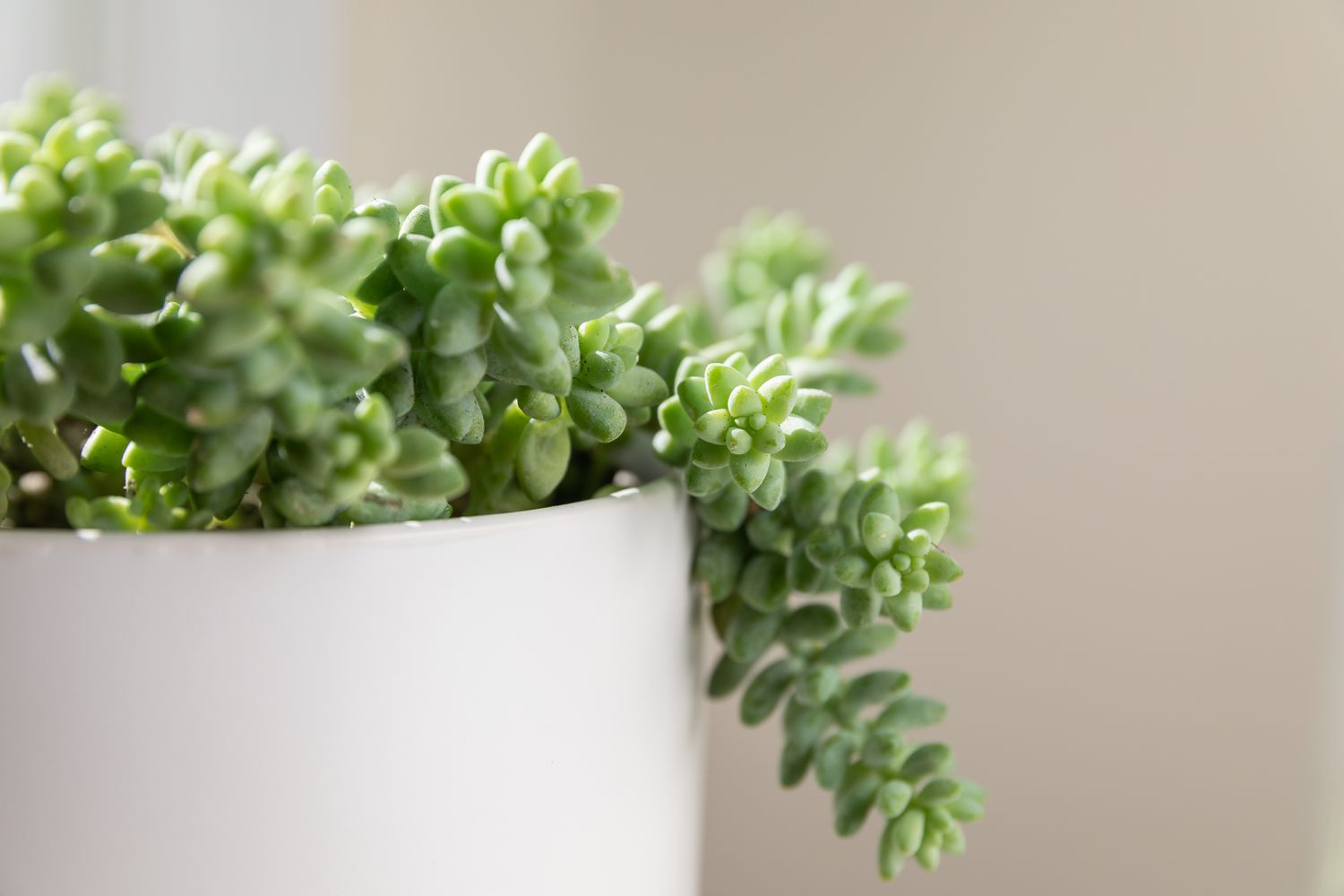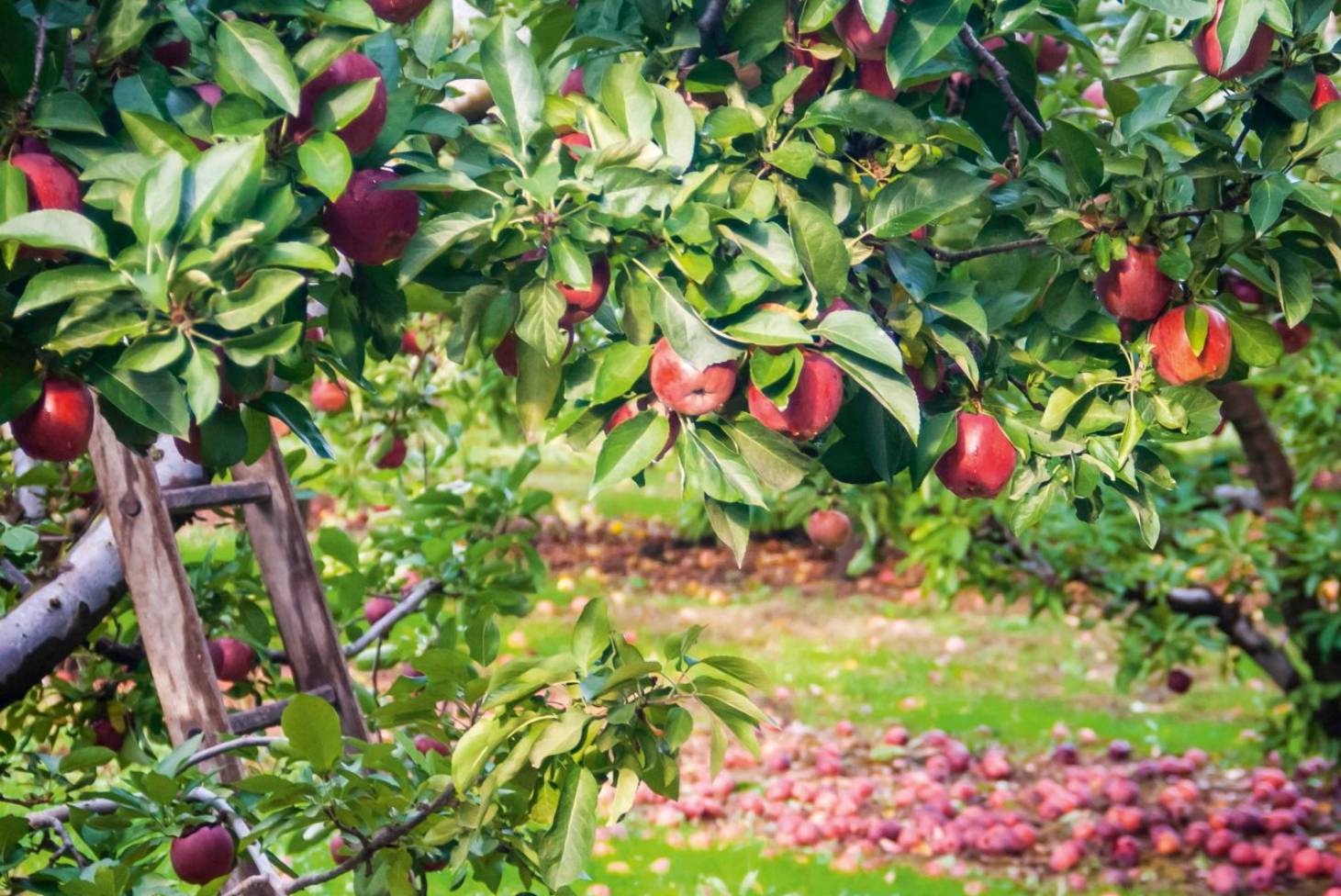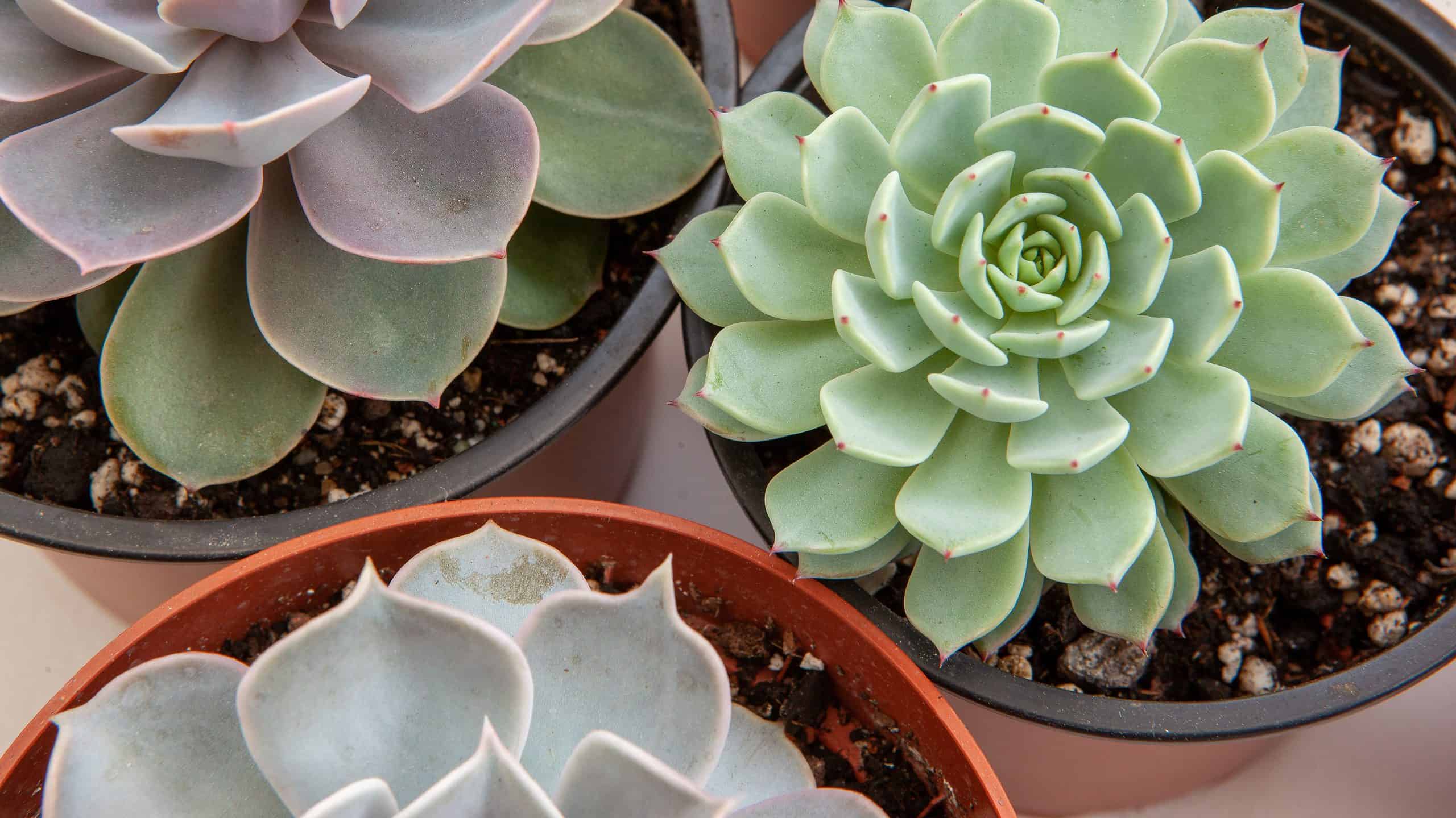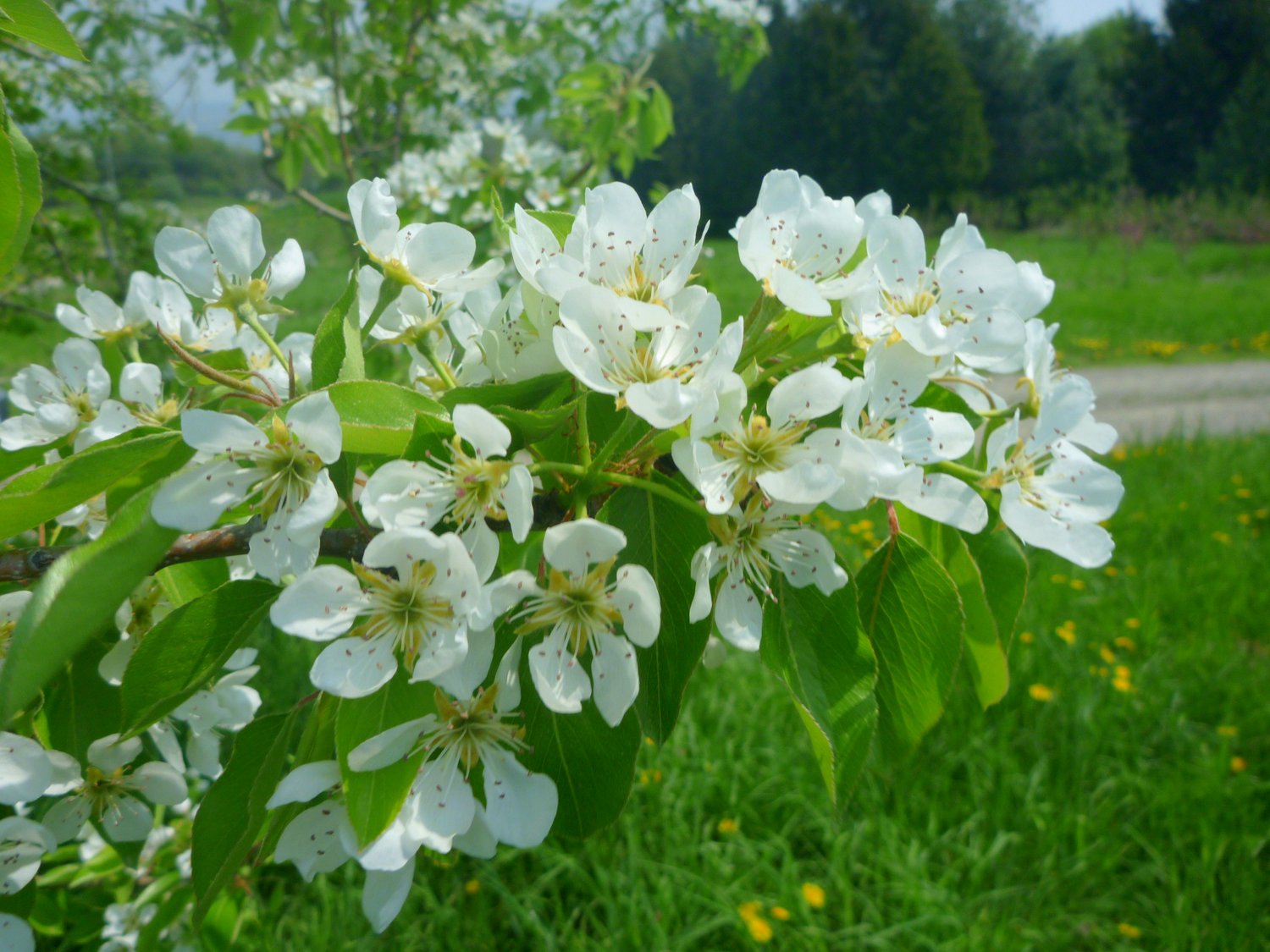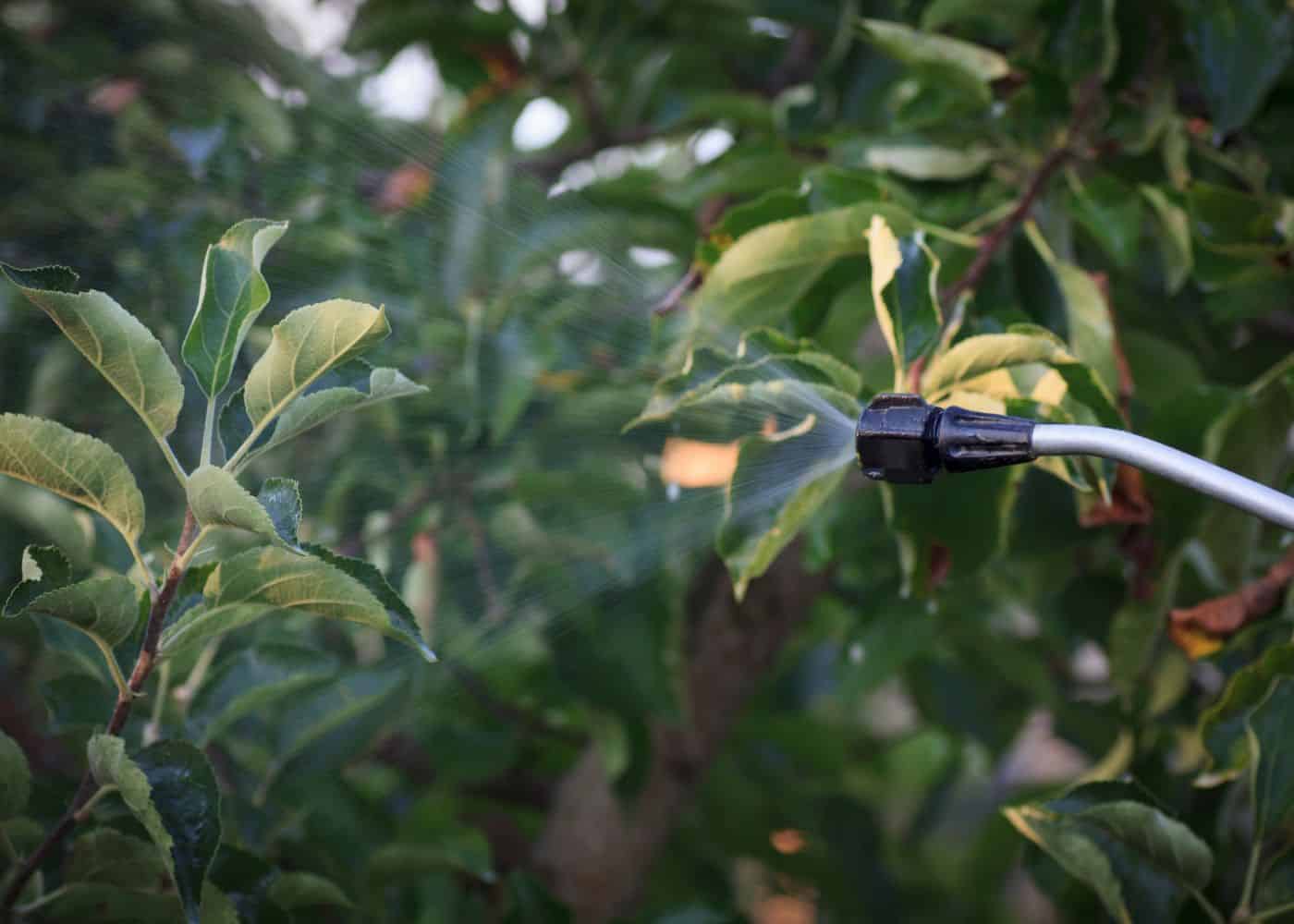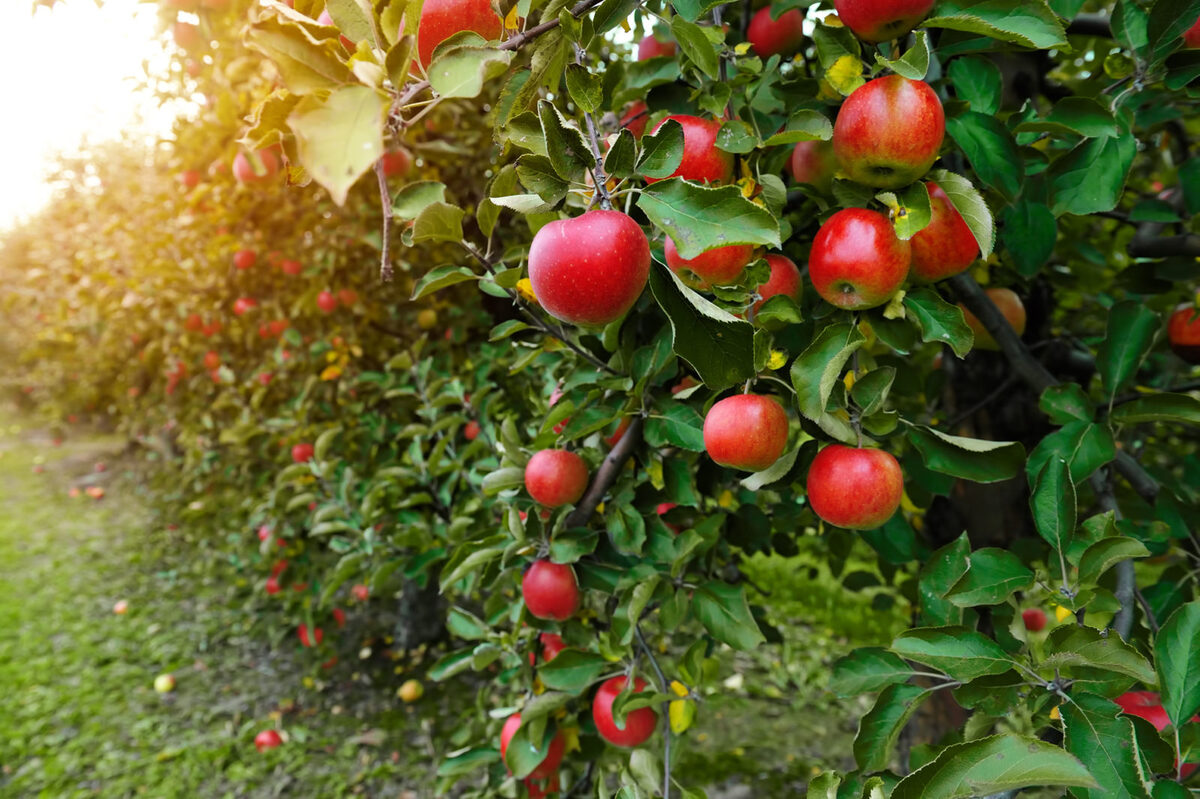Home>Gardening Techniques>Plant Care>How Fast Do Honeycrisp Apple Trees Grow
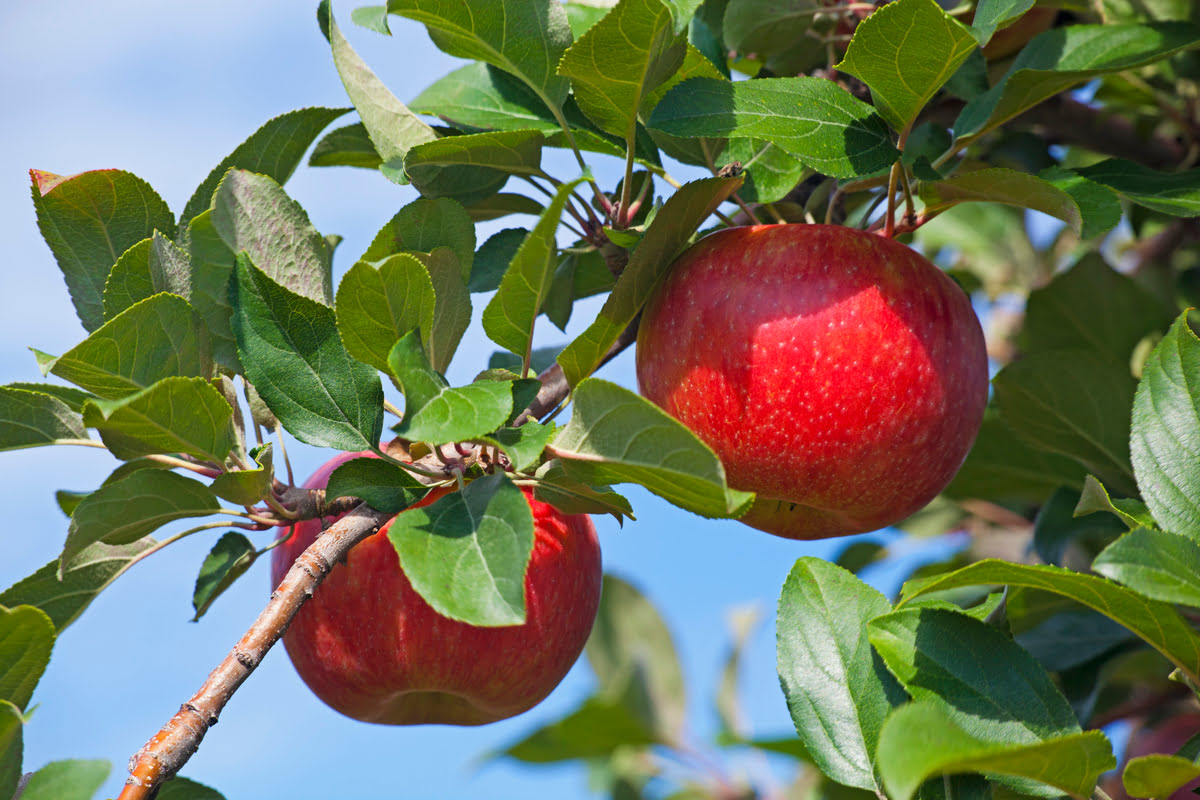

Plant Care
How Fast Do Honeycrisp Apple Trees Grow
Modified: January 22, 2024
Discover the growth rate of Honeycrisp apple trees and learn essential plant care tips. Find out how to nurture these trees for optimal growth and fruit production.
(Many of the links in this article redirect to a specific reviewed product. Your purchase of these products through affiliate links helps to generate commission for Chicagolandgardening.com, at no extra cost. Learn more)
Table of Contents
Introduction
Welcome to the world of plant care! Whether you’re a seasoned gardener or just starting out, understanding how to properly care for your plants is essential for their growth and vitality. In this article, we will delve into the fascinating realm of plant care, focusing specifically on honeycrisp apple trees.
Honeycrisp apple trees (Malus domestica) are renowned for their crisp, juicy, and sweet-tart flavor. They have become increasingly popular among gardeners and apple enthusiasts due to their exceptional taste and texture. However, growing and maintaining these trees requires a basic understanding of their specific needs and growth habits.
Throughout the course of this article, we will explore various aspects of honeycrisp apple tree care, including the growing season, planting and establishment, growth rate, environmental factors, pruning and training, common diseases and pests, as well as fruiting and harvesting. By the end, you will be equipped with the knowledge needed to cultivate healthy honeycrisp apple trees and enjoy a bountiful harvest.
So, whether you have a small backyard orchard or simply a single apple tree, let’s dive in and uncover the secrets to successfully caring for honeycrisp apple trees.
Growing Season
The growing season of honeycrisp apple trees plays a crucial role in their overall health and productivity. These trees are deciduous, meaning they shed their leaves during the winter months and enter a period of dormancy. Understanding the specific growing season of honeycrisp apple trees is essential for proper care and maintenance.
In general, honeycrisp apple trees thrive in temperate climates where they experience a distinct four-season cycle. They require a period of dormancy during the winter to ensure proper bud development and subsequent fruit production in the following growing season.
The growing season for honeycrisp apple trees typically begins in early spring, when the tree emerges from dormancy and new buds start to swell. This is an exciting time for gardeners, as it signifies the start of a new growth cycle. During this time, it’s important to provide adequate water and nutrients to support the tree’s early growth.
As the spring progresses and temperatures rise, honeycrisp apple trees enter the flowering stage. Delicate clusters of white or pink blossoms grace the tree, attracting pollinators such as bees and butterflies. Cross-pollination with another apple tree of a different variety is necessary for fruit set and a bountiful harvest, so be sure to have nearby apple trees or utilize grafting techniques for successful pollination.
Throughout the summer months, honeycrisp apple trees undergo rapid growth and development. Leaves mature and provide essential shade to protect the developing apples from the scorching sun. During this time, it’s crucial to monitor moisture levels and provide regular irrigation to ensure the tree’s water needs are met.
In the fall, the honeycrisp apple tree rewards its caretakers with a stunning display of colors. The leaves transition into brilliant shades of yellow, orange, and red. It is also during this time that the apples reach their peak maturity and sweetness. Harvesting the fruits at the right time is vital for flavor and storage life.
Understanding the specific growing season of honeycrisp apple trees allows gardeners to plan and execute proper care strategies. By providing the right conditions and support during each stage, you can maximize the tree’s potential and enjoy a successful harvest year after year.
Planting and Establishment
Proper planting and establishment are fundamental to the success of honeycrisp apple trees. Taking the time to carefully prepare the planting site and provide optimal conditions for growth will set the foundation for healthy and productive trees.
When selecting a location to plant your honeycrisp apple tree, it’s important to consider several factors. Firstly, choose an area that receives full sun for at least six to eight hours a day. Sunlight is crucial for photosynthesis and fruit development. Additionally, ensure that the soil is well-draining to prevent waterlogged roots, which can lead to root rot and other diseases.
Before planting, it is recommended to test the soil pH. Honeycrisp apple trees prefer slightly acidic soil with a pH between 6.0 and 6.5. If necessary, adjust the pH by adding amendments such as lime or sulfur to create the optimal growing conditions for your tree.
When it comes to planting, dig a hole that is wide and deep enough to accommodate the tree’s root system. Gently spread out the roots and position the tree in the hole, making sure it sits at the same depth it was previously planted. Avoid planting the tree too deep, as this can hinder oxygen uptake and lead to suffocation of the roots.
Backfill the hole with a mixture of native soil and organic matter, such as compost or well-rotted manure. This will help improve soil fertility and drainage. Press the soil firmly around the roots to eliminate air pockets and provide stability to the tree.
After planting, water the tree thoroughly to promote root establishment. It is essential to provide regular irrigation in the early stages of growth, especially during dry spells, to ensure the tree has adequate moisture. Apply a layer of organic mulch, such as wood chips or straw, around the base of the tree to conserve moisture, suppress weeds, and regulate soil temperatures.
In terms of spacing, honeycrisp apple trees should be planted at least 15 to 20 feet apart to allow for proper air circulation and light penetration. This helps prevent fungal diseases and promotes healthy growth.
Remember that establishing a honeycrisp apple tree is a long-term commitment. Proper care, including regular watering, mulching, and fertilizing, is necessary to promote healthy growth and fruit production. With patience and dedication, your honeycrisp apple tree will flourish and provide you with years of delicious harvests.
Growth Rate
Honeycrisp apple trees exhibit a moderate growth rate, which makes them suitable for home gardeners and orchard owners alike. Understanding the growth patterns of these trees can help guide your pruning and training efforts, as well as give you an idea of when to expect fruit production.
During the first few years after planting, honeycrisp apple trees focus their energy on establishing a strong root system and developing a sturdy trunk. Growth during this establishment period may seem slow, with only minimal increases in height and foliage volume.
As the tree matures, typically around the third or fourth year, you’ll begin to notice more vigorous growth. Honeycrisp apple trees can reach a mature height of 15 to 20 feet, with a spread of 10 to 15 feet. The actual growth rate will vary depending on environmental factors and the specific growing conditions of your location.
It’s important to note that growth rate can be influenced by various factors, including soil fertility, water availability, and overall tree health. Providing adequate nutrients through regular fertilization, ensuring proper irrigation, and monitoring for any signs of stress or disease will help promote optimal growth.
Pruning and training techniques can also influence the growth rate and shape of the honeycrisp apple tree. Pruning is typically done during the dormant season to remove dead or diseased wood, thin out overcrowded branches, and shape the tree for better light penetration and air circulation.
When it comes to training the tree, practices such as espalier or trellising can help guide the growth and maximize space utilization. By carefully shaping the branches and training them along a support structure, you can create a more manageable tree and potentially increase fruit production.
In terms of fruiting, honeycrisp apple trees usually begin bearing fruit around the third or fourth year after planting, although it can vary based on growing conditions and individual tree vigor. The fruiting process follows the natural growth cycle, with the tree setting blossoms in the spring, which then develop into apples that mature and are ready for harvest in the fall.
Overall, honeycrisp apple trees have a moderate growth rate that can be influenced by various factors. Proper care, including regular maintenance, pruning, and providing optimal growing conditions, will help ensure healthy growth and a bountiful harvest in due time.
Environmental Factors
Several environmental factors play a crucial role in the health and growth of honeycrisp apple trees. Understanding and managing these factors is essential for ensuring optimal conditions and maximizing the tree’s potential.
One of the most important environmental factors is sunlight. Honeycrisp apple trees thrive in full sun, requiring at least six to eight hours of direct sunlight each day. Sunlight is vital for photosynthesis, the process by which the tree converts light energy into food. Insufficient sunlight can result in stunted growth, lower fruit production, and increased susceptibility to pests and diseases.
Another critical factor to consider is temperature. Honeycrisp apple trees are adapted to temperate climates and require a certain number of chill hours during winter dormancy to set fruit properly. A chill hour is defined as one hour below 45 degrees Fahrenheit (7 degrees Celsius). If your region does not receive enough chill hours, it may affect the tree’s ability to flower and produce fruit. Conversely, extreme cold temperatures or late frosts can damage buds and blossoms, leading to reduced fruit yield.
Soil quality and composition are also essential for healthy tree growth. Honeycrisp apple trees prefer well-drained soil with a pH level between 6.0 and 6.5. The soil should be rich in organic matter and have good water-holding capacity. Conduct a soil test to ensure proper nutrient levels and adjust the soil pH if necessary using appropriate amendments.
Water availability is crucial for the growth and survival of honeycrisp apple trees. Adequate irrigation is necessary, especially during dry spells and the summer months when water demand is high. It’s important to strike a balance by providing enough water to prevent dehydration and drought stress, while avoiding overwatering, which can lead to root rot and other diseases.
Air circulation and humidity levels can also impact the health of honeycrisp apple trees. Good air movement allows for proper drying of leaves and reduces the risk of fungal diseases. Planting trees with enough spacing and avoiding overcrowding can help promote better airflow. Additionally, excessive humidity can increase the likelihood of diseases such as apple scab. Fungal control measures, such as pruning for better light penetration and applying appropriate fungicides, may be necessary in high humidity regions.
Lastly, the presence of nearby companion plants can influence the growth and well-being of honeycrisp apple trees. Some plants, such as certain types of herbs and flowers, can attract beneficial insects and pollinators, aiding in cross-pollination for better fruit set. However, it’s important to avoid planting trees near plants that are susceptible to pests and diseases that can transfer to the apple tree.
By understanding and managing the various environmental factors that impact honeycrisp apple trees, you can create the optimal growing conditions for healthy growth, optimal fruit production, and overall tree vitality.
Pruning and Training
Pruning and training honeycrisp apple trees are essential practices that help shape the tree’s growth, improve airflow and light penetration, and promote optimal fruit production. Properly pruning and training your apple tree not only enhances its overall health but also makes maintenance and harvesting more manageable.
Pruning is typically done during the dormant season, late winter to early spring, when the tree is not actively growing. The primary goal of pruning is to remove dead, damaged, or diseased wood, as well as thin out crowded branches. This allows for better air circulation within the canopy, reducing the risk of fungal diseases.
Start by removing any branches that are crossing or rubbing against each other, as they can cause wounds and invite pests or diseases. Look for branches that are growing inward towards the center of the tree and remove them to promote an open and balanced canopy.
When pruning, use clean and sharp pruning shears or saws. Make clean cuts just above a bud or lateral branch, leaving a small collar to aid in healing and prevent disease entry. Avoid leaving stubs or making flush cuts, as they can hinder the tree’s ability to heal properly and lead to decay.
In addition to general pruning, training honeycrisp apple trees is important for shaping the tree’s growth and maximizing fruit production. One common training method is espalier, where branches are trained to grow in a horizontal or fan-like pattern along a support structure, such as a trellis or wall. Espaliering can help save space, increase sunlight exposure, and make maintenance easier.
Another training technique is to prune the tree into a central leader system. This involves selecting a single, dominant upright branch as the central leader and allowing it to grow vertically. Other lateral branches are pruned to maintain a pyramidal shape, with the lower branches gradually removed as the tree matures.
Regardless of the training method, it’s important to provide support for young branches to prevent breakage under heavy fruit loads. You can tie branches to stakes or use specialized tree training products to distribute the weight and maintain the desired shape.
Regular maintenance pruning is also necessary during the growing season to remove water sprouts or suckers that emerge from the base of the trunk or along the main branches. These growths divert energy from the tree and contribute to a messy appearance. Simply remove them by cutting them off at the base.
Remember that pruning and training should be done gradually and with care. It’s advisable to seek guidance from local gardening resources or consult with a certified arborist if you are unsure about specific pruning techniques or have concerns about the health of your honey crisp apple tree.
By implementing proper pruning and training practices, you can create a well-shaped and manageable honeycrisp apple tree that thrives and produces an abundance of delicious fruit.
Diseases and Pests
Like any other plant, honeycrisp apple trees are susceptible to a variety of diseases and pests that can impact their health and fruit production. Being aware of common issues and taking preventive measures is essential for maintaining the vitality of your apple tree.
One of the most prevalent diseases affecting apple trees is apple scab (Venturia inaequalis). It appears as dark, scaly lesions on leaves, fruits, and even twigs. To prevent apple scab, practice good sanitation by removing fallen leaves and fruits, as the fungus overwinters on these materials. Applying fungicides at appropriate intervals during the growing season can also provide control.
Fire blight (Erwinia amylovora) is another serious bacterial disease that affects apple trees. It causes wilting, blackening, and necrosis of blossoms, shoots, and branches. Pruning infected wood during the dormant season, using disease-resistant cultivars, and applying appropriate antibiotics can help manage fire blight.
Cedar apple rust is a fungal disease that requires both apple trees and juniper or cedar trees for its lifecycle. It manifests as orange, gelatinous lesions on apple leaves, fruit, and spittle-like galls on cedar trees. Remove nearby cedar trees or use appropriate fungicide sprays to reduce the likelihood of infection.
Various pests can also pose a threat to honeycrisp apple trees. Apple maggots (Rhagoletis pomonella) are small, fly-like insects that lay eggs in developing fruits, causing damage and leading to fruit rot. Installing traps, using insecticides, and practicing good orchard hygiene can help manage apple maggots.
Codling moth (Cydia pomonella) is another major apple pest that causes damage by tunneling into the fruit and leaving frass or excrement behind. To control codling moths, use pheromone traps to monitor populations and employ techniques like mating disruption, biological control with parasitic wasps, or targeted insecticide application.
Aphids, mites, and other sucking insects can also infest apple trees, causing damage by feeding on sap and spreading viral diseases. Regularly inspect the foliage for signs of infestation and use insecticidal soaps or horticultural oils as a treatment option, if needed.
Preventing diseases and pests starts with proper tree care. Providing adequate water, nutrition, and sunlight is crucial for maintaining tree vigor and resilience. Implementing good sanitation practices, such as removing fallen leaves and pruning infected wood, is also important.
It’s essential to monitor your apple tree regularly for any signs of disease or pest infestation. Early detection allows for swift action and reduces the severity of the problem. Consult with local extension offices, arborists, or horticultural resources to get guidance on specific disease and pest management strategies in your area.
By being proactive and taking appropriate measures, you can effectively manage diseases and pests, ensuring the health and productivity of your honeycrisp apple tree.
Fruiting and Harvesting
One of the most rewarding aspects of growing honeycrisp apple trees is the anticipation of a bountiful harvest. Understanding the fruiting process and knowing when and how to harvest your apples is crucial for enjoying the best quality and flavor.
After the honeycrisp apple tree goes through its spring bloom, the flowers are pollinated, and the fruit begins to develop. It takes time for the apples to mature and reach their full size and flavor potential. On average, honeycrisp apples are ready for harvest in late summer to early fall, typically around September or October, depending on your region’s climate and growing conditions.
When determining if apples are ready for picking, look for several signs of maturity. Start by observing the color change. Honeycrisp apples transition from a vibrant green to a predominantly red or pink color, varying in intensity depending on the individual apple’s exposure to sunlight.
The firmness of the apples is another important factor. Gently press your finger against the skin of the apple. If it feels firm but slightly yielding, it is likely ripe and ready for harvest. Avoid picking apples that are extremely soft or mushy as they may be overripe or starting to decay.
Flavor and sweetness are also indicators of ripeness. Honeycrisp apples are known for their sweet-tart taste, but the flavor can improve as the apples fully ripen. It’s a good idea to sample an apple or two from different parts of the tree to assess the taste before proceeding with full harvest.
When harvesting honeycrisp apples, use a gentle twisting motion to detach the fruit from the branch. It’s important to handle the apples with care, as rough handling can cause bruising and damage. Place the harvested apples in a sturdy container or basket, taking care not to pile them too high to avoid crushing the lower layer of fruits.
Once harvested, it is crucial to promptly store honeycrisp apples in a cool and well-ventilated area to maintain their quality. Apples should be stored at temperatures around 32 to 40 degrees Fahrenheit (0 to 4 degrees Celsius) with a humidity level of around 90%. This will help prolong their storage life and preserve the crispness and flavor for an extended period.
Keep in mind that honeycrisp apples have a relatively short storage life compared to some other apple varieties. They are best consumed within a few months after harvest, preferably when they are at their peak quality.
Enjoy the fruits of your labor by incorporating honeycrisp apples into your favorite recipes or simply savoring them fresh. From apple pies to applesauce, honeycrisp apples are versatile and delicious.
By understanding the signs of ripeness and properly harvesting and storing honeycrisp apples, you can enjoy the fruits of your labor and experience the unparalleled flavor and crispness that this beloved apple variety has to offer.
Conclusion
Caring for honeycrisp apple trees can be a rewarding and enjoyable experience. By understanding the specific needs of these trees and implementing proper care and maintenance techniques, you can cultivate healthy trees and enjoy a bountiful harvest of delicious apples.
From planning the planting site and ensuring optimal growing conditions to pruning, training, and managing diseases and pests, each step in the process contributes to the overall health and productivity of the tree.
Remember, the growing season sets the stage for successful growth and fruit production. Providing ample sunlight, well-drained soil, and regular watering will promote healthy growth and ensure optimal fruit development.
Proper planting and establishment techniques, such as selecting the right location, preparing the soil, and providing adequate support and care in the early stages, are crucial for the long-term success of honeycrisp apple trees.
Growth rate, influenced by environmental factors, pruning, and training, determines the tree’s shape, size, and fruiting potential. Understanding and managing these factors will enable you to create an ideal environment for your honeycrisp apple tree.
While diseases and pests can pose challenges, regular monitoring, implementing preventive measures, and taking appropriate action when needed will help maintain tree health and minimize the impact of potential issues.
Finally, the culmination of your efforts lies in the fruiting and harvesting of honeycrisp apples. Knowing the signs of ripeness, properly harvesting the apples, and storing them in the right conditions will ensure that you can enjoy their exceptional taste and texture to the fullest.
By following these guidelines and continuously learning about the specific needs of your honeycrisp apple tree, you can cultivate thriving trees that provide you with an abundance of delicious apples for years to come.


